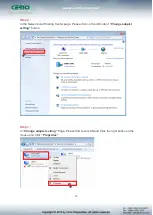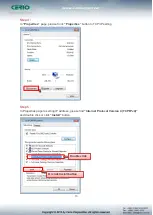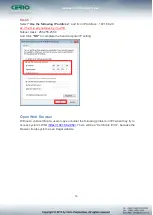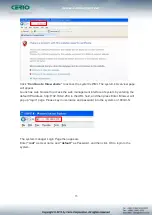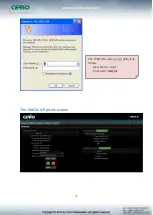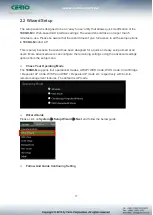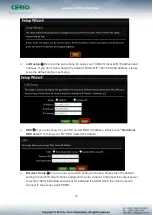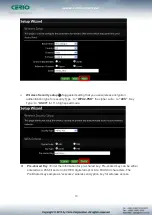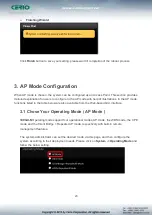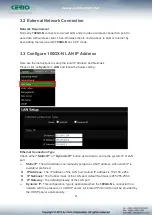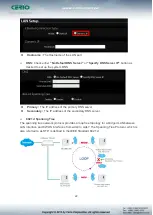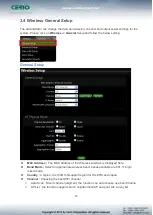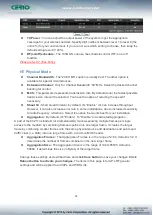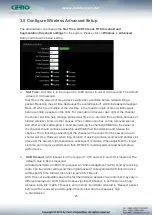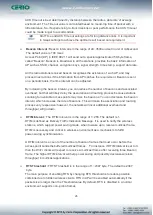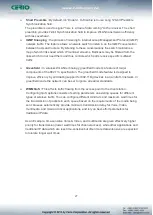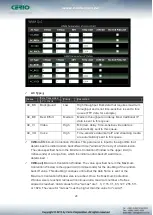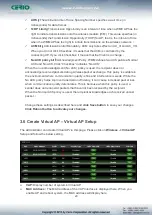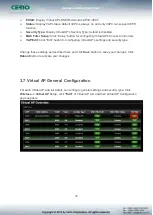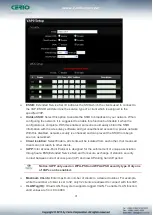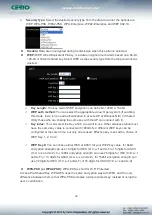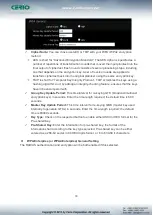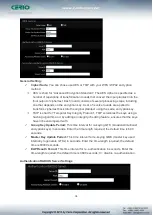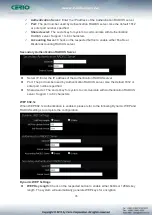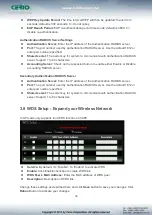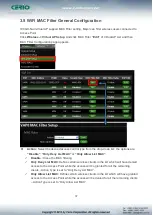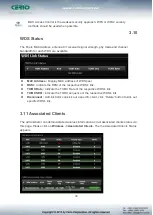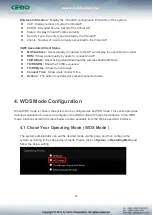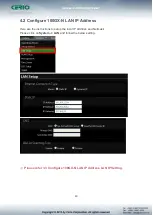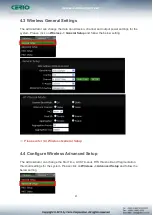
26
ACK Timeout is best determined by distance between the radios, data rate of average
environment. The Timeout value is calculated based on round-trip time of packet with a
little tolerance, So, if experiencing re-transmissions or poor performance the ACK Timeout
could be made longer to accommodate.
Slot Time and ACK Timeout settings are for long distance links. It is important
to tweak settings to achieve the optimal result based on requirement.
Beacon Interval :
Beacon Interval is in the range of 40~3500 and set in unit of millisecond.
The default value is 100 msec.
Access Point (AP) in IEEE 802.11 will send out a special approximated 50-byte frame,
called “Beacon”. Beacon is broadcast to all the stations, provides the basic information of
AP such as SSID, channel, encryption keys, signal strength, time stamp, support data rate.
All the radio stations received beacon recognizes the existence of such AP, and may
proceed next actions if the information from AP matches the requirement. Beacon is sent
on a periodic basis, the time interval can be adjusted.
By increasing the beacon interval, you can reduce the number of beacons and associated
overhead, but that will likely delay the association and roaming process because stations
scanning for available access points may miss the beacons. You can decrease the beacon
interval, which increases the rate of beacons. This will make the association and roaming
process very responsive; however, the network will incur additional overhead and
throughput will go down.
DTIM Interval :
The DTIM interval is in the range of 1~255. The default is 1.
DTIM is defined as Delivery Traffic Indication Message. It is used to notify the wireless
stations, which support power saving mode, when to wake up to receive multicast frame.
DTIM is necessary and critical in wireless environment as a mechanism to fulfill
power-saving synchronization.
A DTIM interval is a count of the number of beacon frames that must occur before the
access point sends the buffered multicast frames. For instance, if DTIM Interval is set to 3,
then the Wi-Fi clients will expect to receive a multicast frame after receiving three Beacon
frame. The higher DTIM interval will help power saving and possibly decrease wireless
throughput in multicast applications.
RTS Threshold :
TRTS Threshold is in the range of 1~2347 byte. The default is 2347
byte.
The main purpose of enabling RTS by changing RTS threshold is to reduce possible
collisions due to hidden wireless clients. RTS in AP will be enabled automatically if the
packet size is larger than the Threshold value. By default, RTS is disabled in a normal
environment supports non-jumbo frames.
Содержание 100GX-N
Страница 1: ...1 CERIO Corporation 100GX N extreme High Power 11n 150Mbps In Wall PoE Access Point User s Manual ...
Страница 16: ...16 The 100GX N System screen The 100GX N system login default As follows User Name root Password default ...
Страница 61: ...61 Please refer 3 5 Configure Wireless Advanced Setup Explanation ...

